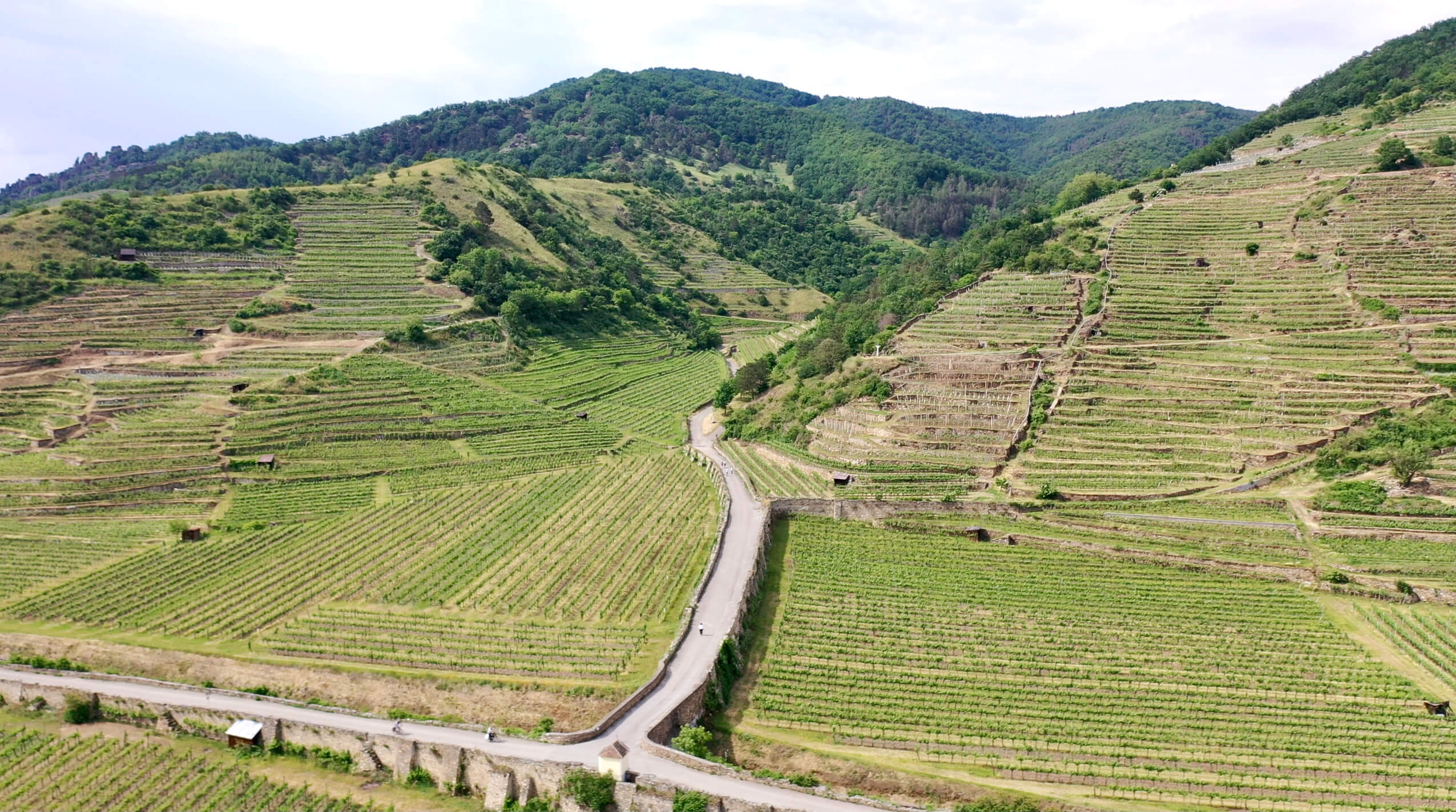
I’ve dreamt of filming the Wachau’s section of the Danube River gorge for years, and even proposed to Emmerich Knoll, a good friend and the current president of the Vinea Wachau, about ten years ago to rent a helicopter (before drones were really around). The idea was to film the whole thing to use for a US tasting tour with top Wachau producers and all their importers under one roof, kind of like it was in Austria’s golden age when US importer, Vin Divino, had just about everyone important from the Wachau and Austria, outside of what at the time was a much smaller portfolio of Austrian producers from Thierry Theise. Once Vin Divino sold, the flow slowed to a trickle (it seems, because I haven’t heard of any tastings happening like the ones I attended twenty years ago) and left new generations of sommeliers and wine professionals a little in the dark on the subject. I was lucky to join those tastings Vin Divino put on; they were like a miniature version of Austria’s fabulous semi-annual trade show Vie Vinum. It really opened my eyes. Emmerich liked the idea of the filming from up high, but it never materialized.
Hard Choice: Schnitzel or Kebab?
Rain was in the forecast, bad weather for the drone. After about thirty minutes of good footage with ominous clouds overhead, Martin Mittelbach, the owner of Weingut Tegernseerhof and my host for the day, headed over to his family’s heuriger (a wine country tavern usually owned and operated by a wine producer) for a bite. Of course, it would be wiener schnitzel for me—another one of my food obsessions—and Martin’s partner in crime, Eva, had already told her friends and the staff that that is what I would order. It’d been too many years since my last, and I wasn’t about to let another meal pass by if a good one was available.
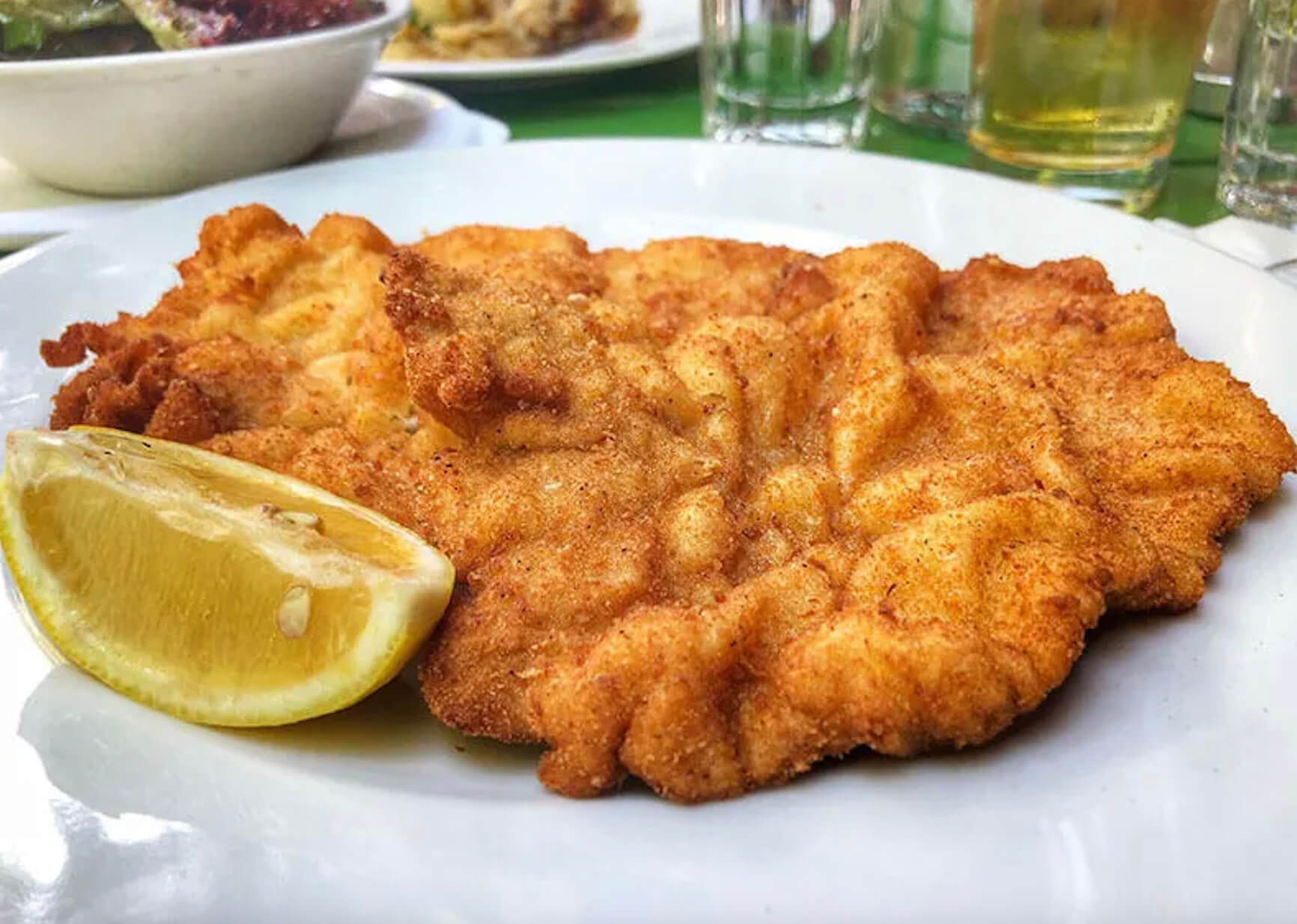
I am always on the hunt in Austria for the best wiener schnitzel experience. It’s not an extraordinarily complex meal, in fact it’s quite simple. But I like simple things too. The best food and wine come in simple forms but have someone’s all put into perfecting its simplicity. I was in a famous restaurant in Vienna known for its traditional wiener schnitzels, always made with veal, never pork, the latter of which should be more properly listed as schwein schnitzel (always ask if what’s on offer is really made with veal because some are pork), and I asked for some spicy mustard to go with it. The waitress, probably in her mid-forties but looked mid-fifties, grimaced with a look of disgust—that look would mark the last time that request was ever made in Austria to accompany my schnitzel, even though I always want it, especially when they are a little on the dry side.
I have the same obsession with döner kebab (kebap) and Turkish pizzas, also Mexican food, surely my favorite overall hand-held food along with burgers. On average, the best kebaps are to be found in southern Spain, Austria and Germany, but I had one in Dublin once with ingredients that ranked up there with the very best but didn’t bring it home in the flavor department as much as others I’ve had elsewhere. The most satisfying I’ve ever had (and probably the cheapest, too) was in Granada, Spain, at a tiny place on a side street just off a grungy, busy square, that served the “Taj Mahal.” The Taj Mahal at this place (a name I’ve not seen since in a kebab place) is a perfect balance of big-time spicy heat and a coolant of herb-rich, cold yogurt with crispy but still-soft-on-the-inside meat carved from the spinning cone of stacked slices, and a freshly baked flatbread to roll it all up. I was able to find this place again by memory thirteen years after I went there the first time in 2004. I was surprised that it was just as good as I remembered. I don’t remember the name of the place and still can’t find it on a map, but I know where it is once I get into Granada’s city center.
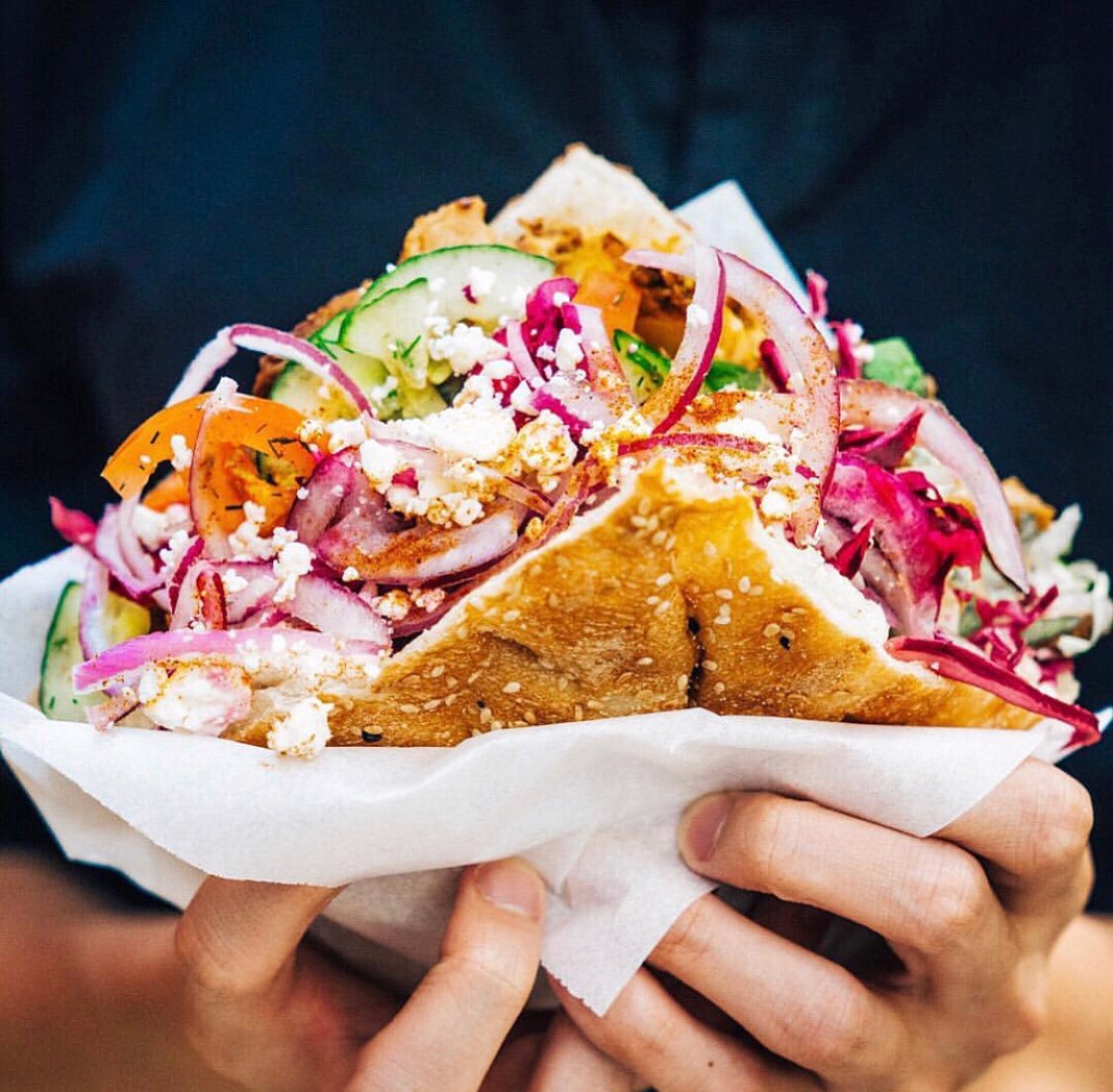
Unexpectedly, one of my favorite schnitzels came from a restaurant in Santa Barbara, California, where I lived for fifteen years, called the Dutch Garden—commonly referred to as the “D.G.” by locals. They were a greasy mess and not really so traditional because they used panko as the crust, but it was my favorite schwein schnitzel, even when compared to most in Europe. Sadly, during the pandemic, this place that locals had seen as an institution closed down permanently after seventy-five years, and I didn’t even get to have a farewell schnitzel. What a great loss to the restaurant scene in that town. It was probably the most underrated Santa Barbara restaurant that served real home cooking like I think my German ancestors would’ve loved. It was kind of a dumpy place, but the food was as heartwarming as it was artery clogging. The weisswurst, potato salad and sauerkraut all warrant honorable mentions. Rest in peace, D.G…
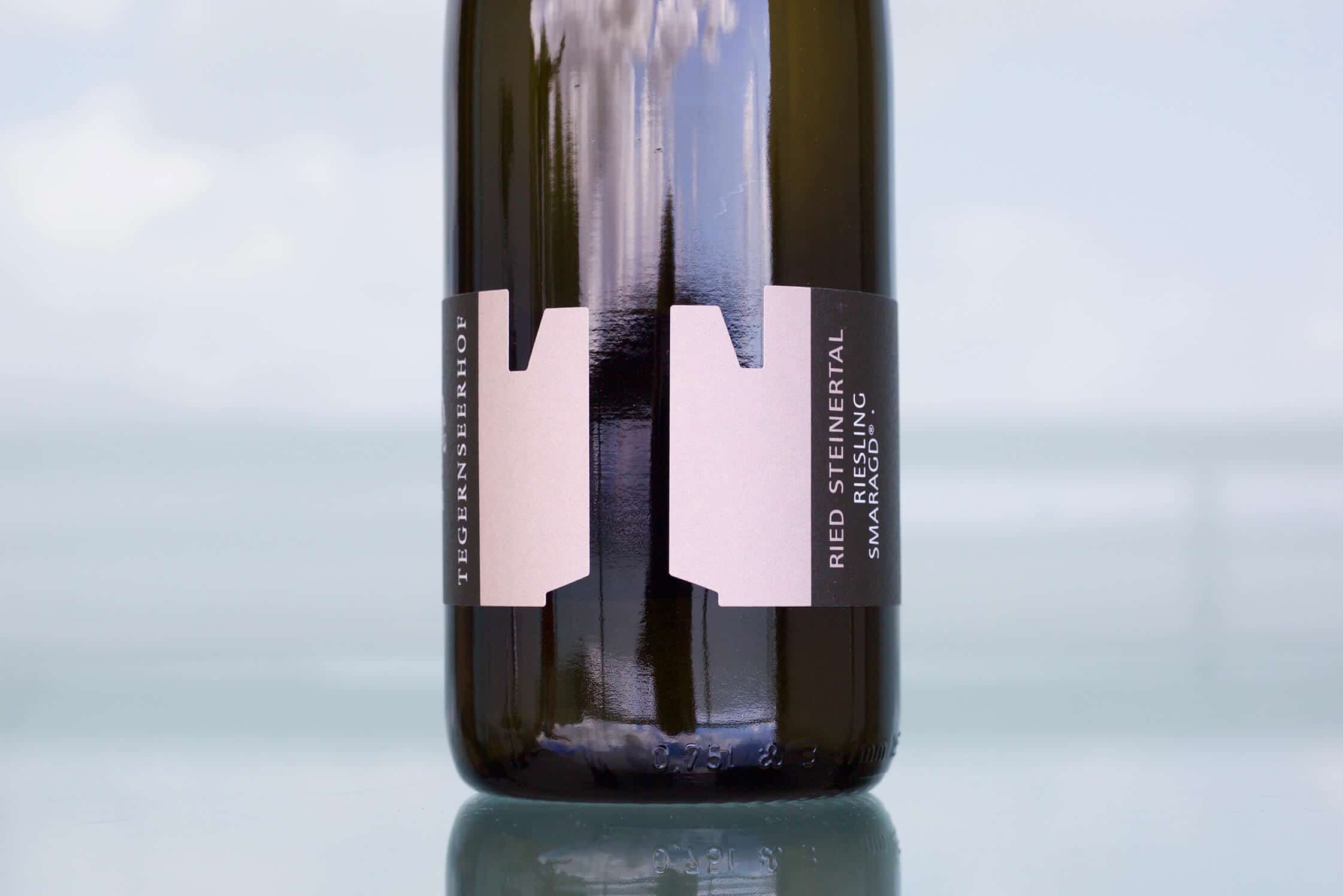
After I scarfed down the schnitzel accompanied by the last of a bottle of 2010 Tegernseerhof Steinertal Riesling Smaragd (my favorite in Martin’s range), we headed back to the winery to do a little more filming, including an interview where he talks about each of his wines. Some people are great on camera because they act naturally. For Martin, it evolved into a cheesy comedy sketch, like an old show filled with exaggerated, corny pitches on each wine, and a constant barrage of interruptions from his family and friends in search of the next bottle. He’s a hard one to pin down in one spot for long because he has so much energy that explodes into random bursts of laughter, followed by a completely serious face. He did well enough on the filming, and now that you know a little backstory, you can check out the interview on our website soon to watch as he tries to contain himself with a squirmy attempt to act normal, whatever that is. He’s one of the most fun guys we know in Austria, and a tireless host that goes out of his way to make sure you are taken care of, no matter how many days you happen to be there.
Martin has changed his game in recent years by converting his vineyards to organic culture. This is a big break from the older members of the pack in the Wachau who still hold a firm grip on many in the younger generation as they try to keep things from veering too far from the path they rebuilt relatively recently, after the Soviets left Austria in 1955. These parents of many producers grew up in tough times and brought things back from ruin, so it’s understandable that they want to preserve what they worked so hard for. But Martin’s father has been retired now for a long time and Martin has been uninhibited in calling the shots at Tegernseerhof since he was in his mid-twenties.
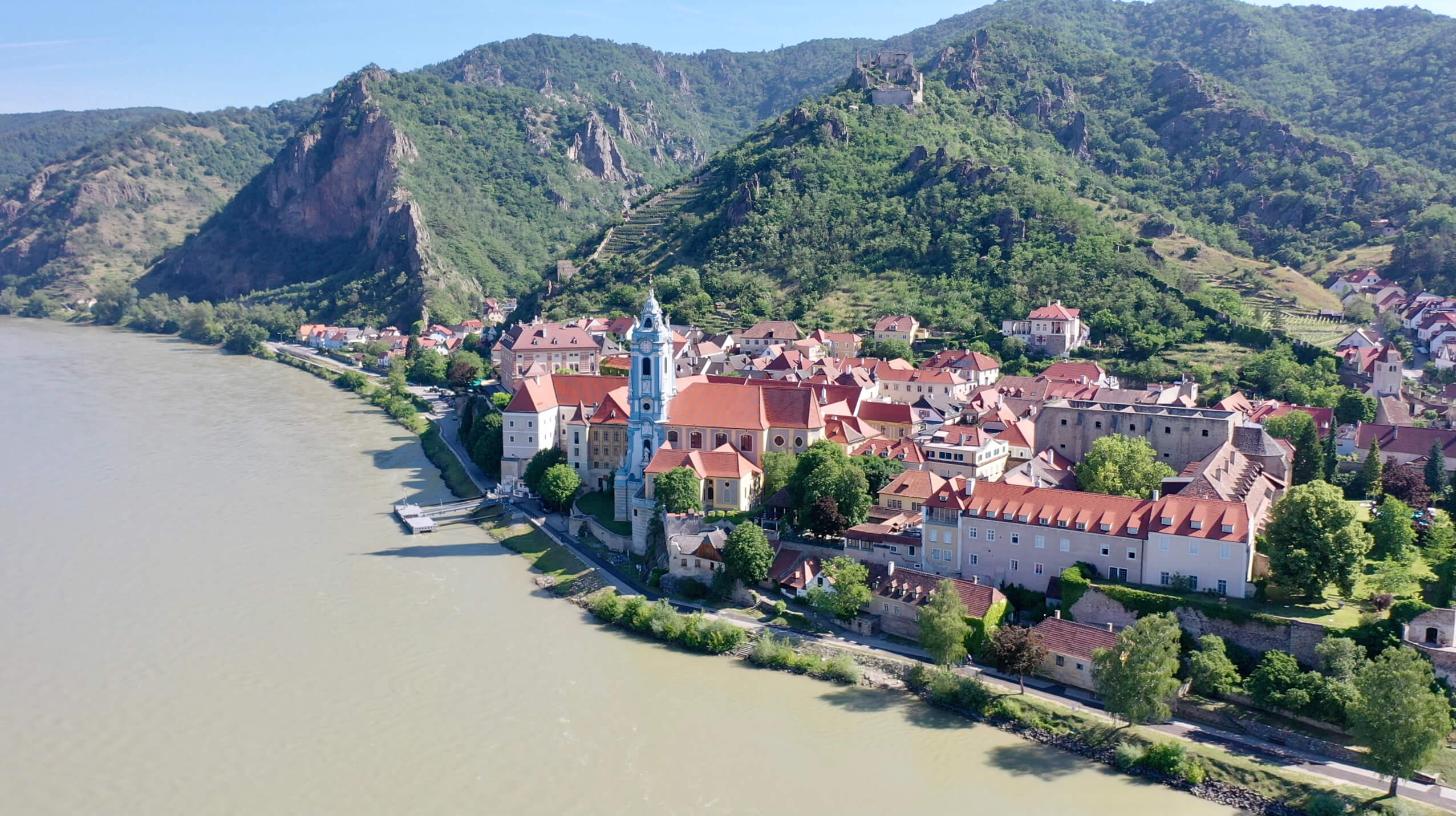
The Wachau has been one of the most conservative and impenetrable regions for welcoming more eco-friendly farming. Though many still considered to be Austria’s preeminent wine region, it’s pretty far behind the curve on progressive and ecological considerations, and yet it is moving in the right direction, albeit slowly. In fact, they may rank last in all of Austria’s most important wine regions for percentage of organically farmed (or better) vineyards. Most growers in the appellation still use herbicides and it’s easy to see it in the spring when the first sprays are made that make the vineyards look like a hair-dye session gone terribly wrong. Most of the terraced areas of the Wachau are impossible to plow, so it’s either done by hand, small machine, or herbicide. From an economic perspective with regard to labor, herbicide is clearly the most efficient and inexpensive on steep terraces or flat land. Much of the vineyard land in the Wachau bears surface level markings inside its vineyards of continued herbicide use and it seems most growers won’t change this until they’re forced to.
I’m happy to say that both producers we work with in the Wachau—the other is Veyder-Malberg—are organically farming, and they are two among less than ten percent of the entire appellation who are doing so (and I think I’m being generous with this number). It’s too bad that the region is so far behind the times compared to so many of the world’s great wine regions, especially since they remain the flag bearer of great wines in a country with a large organic and biodynamic culture everywhere else, though this dominant position may be diminishing. I’m excited for Martin to have broken through on organic farming (but the truth is, he was very close in practice for so many years prior) and onto another chapter that will hopefully set an example for his friends to pull their head out of the rocks, tell dad to chill out, and let the beautiful surrounding nature have more say in the characteristics of the wines.
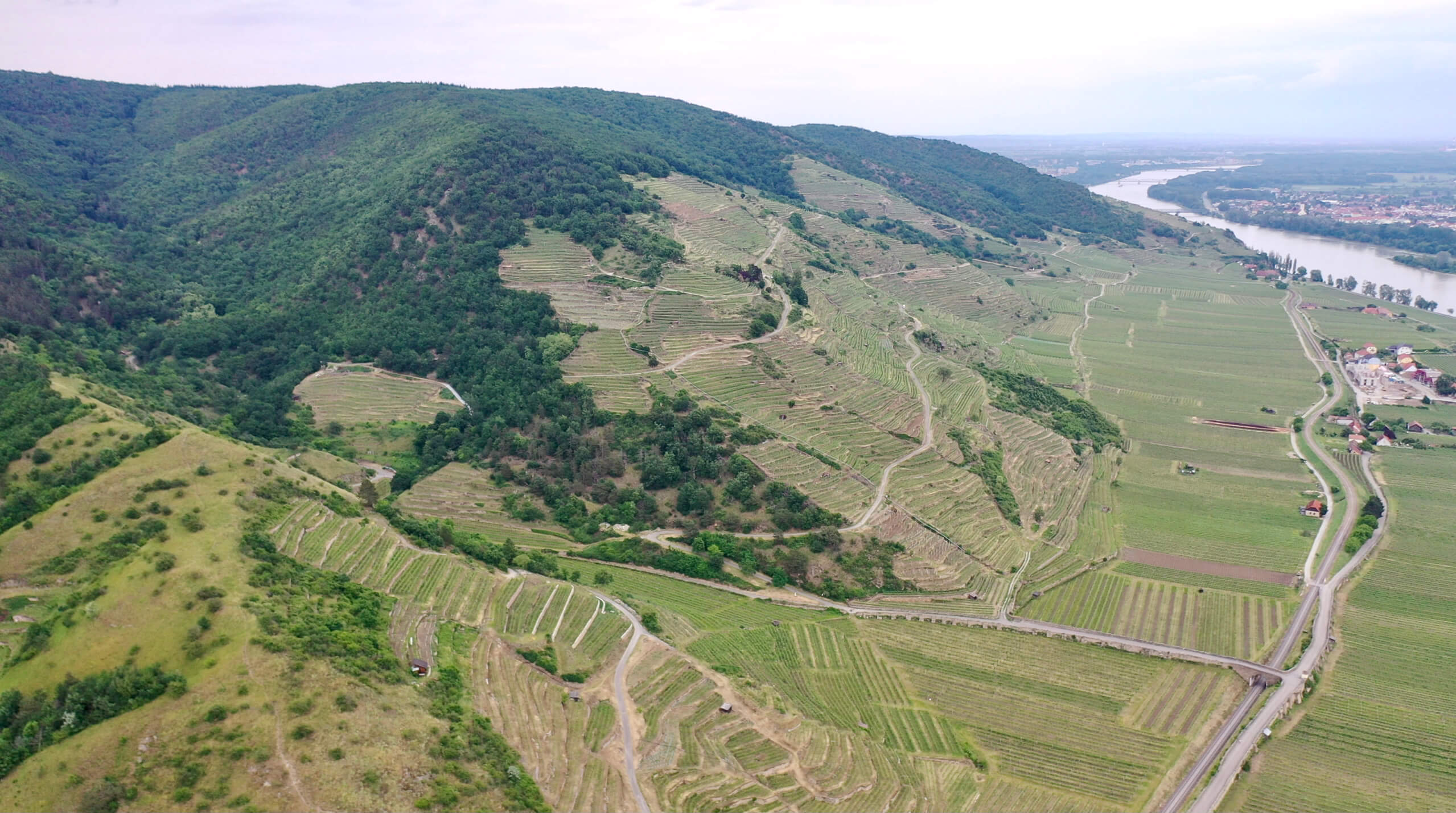
The following morning, I had an early visit with biodynamic guru, Birgit Braunstein. She’s on the far eastern side of Austria in Leithaberg, on the north end of Burgenland. Many centuries ago, this region was inundated by Cistercians, the same monks responsible for advances and the preservation of knowledge in Burgundy and Galicia, among other European wine regions. Here the rock types are limestone and schist, no surprise for the monks who had a thing for limestone (Burgundy) and metamorphic rock (a good chunk of Galicia).
Birgit is without a doubt one of the most actively thoughtful producers we work with. Nearly every month a personal email arrives wishing us well and with news and inquiries of how things are going for us. Not only does she farm her vineyards under biodynamic culture, she lives the culture in her daily life. A single mother that raised her two twin boys alone since birth and who are now running the winery with her, she’s a bit of an angel and you feel the reverence she has for everything around her, including you. She’s our Austrian Mother Goose.
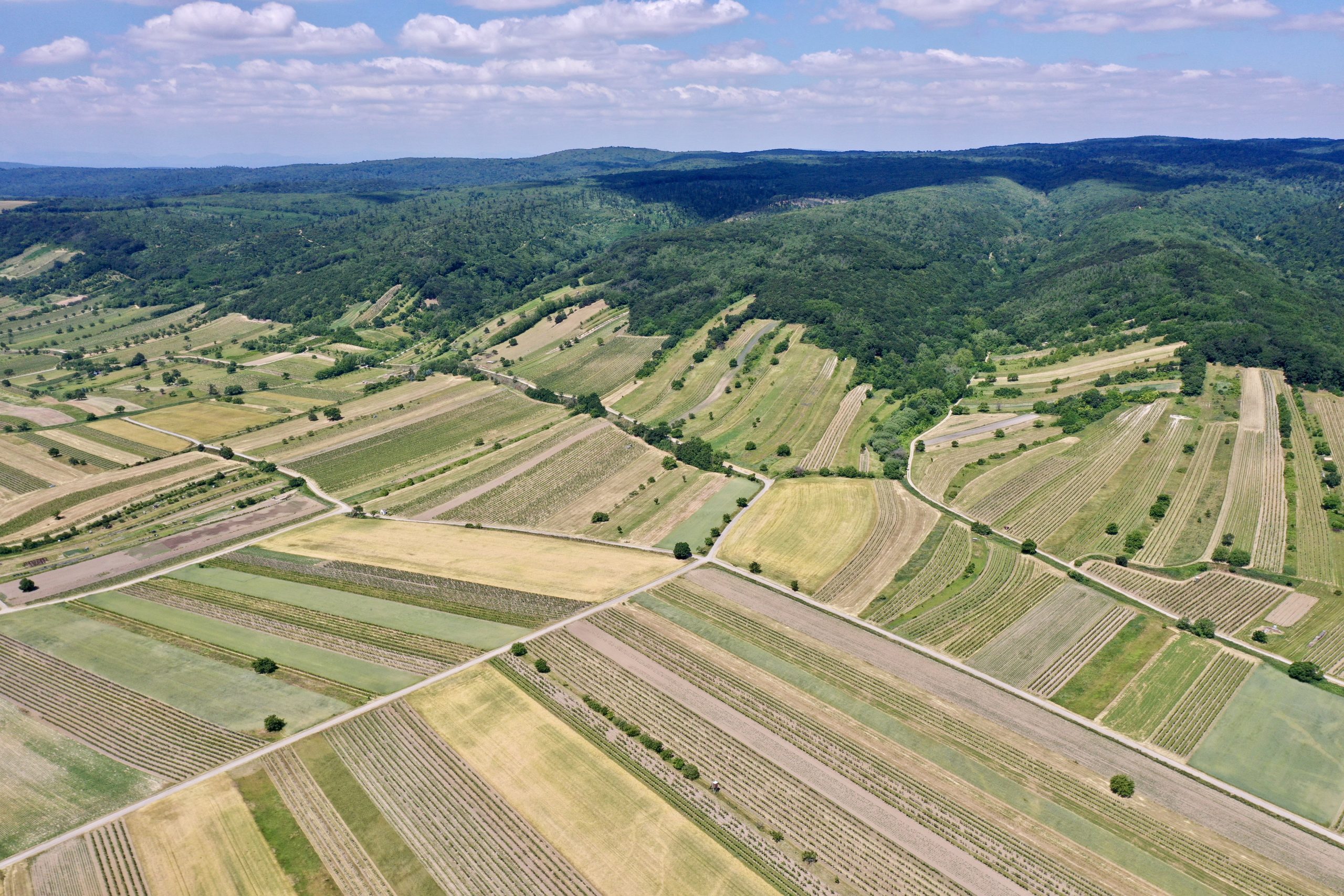
Of course, we did some drone filming. The producers love it. They get to see their vineyards from a vantage they may have never seen, and, as mentioned in the first segment of this 2021 Travel Journal series, sometimes it takes half the drone’s battery life to figure out which parcels are theirs from four hundred feet up. However, Birgit’s are easier because they are the greenest patches, and when I was there, purple too, due to a huge bloom of flowers between the rows. The spring rains stopped the week before I arrived in Austria and there was a drastic heat spike that supercharged growth everywhere. The herbs and flowers between Birgit’s rows were jungles and almost impossible to walk through, with vine shoots growing like tomato plants on an overdose of nitrogen and sunshine.
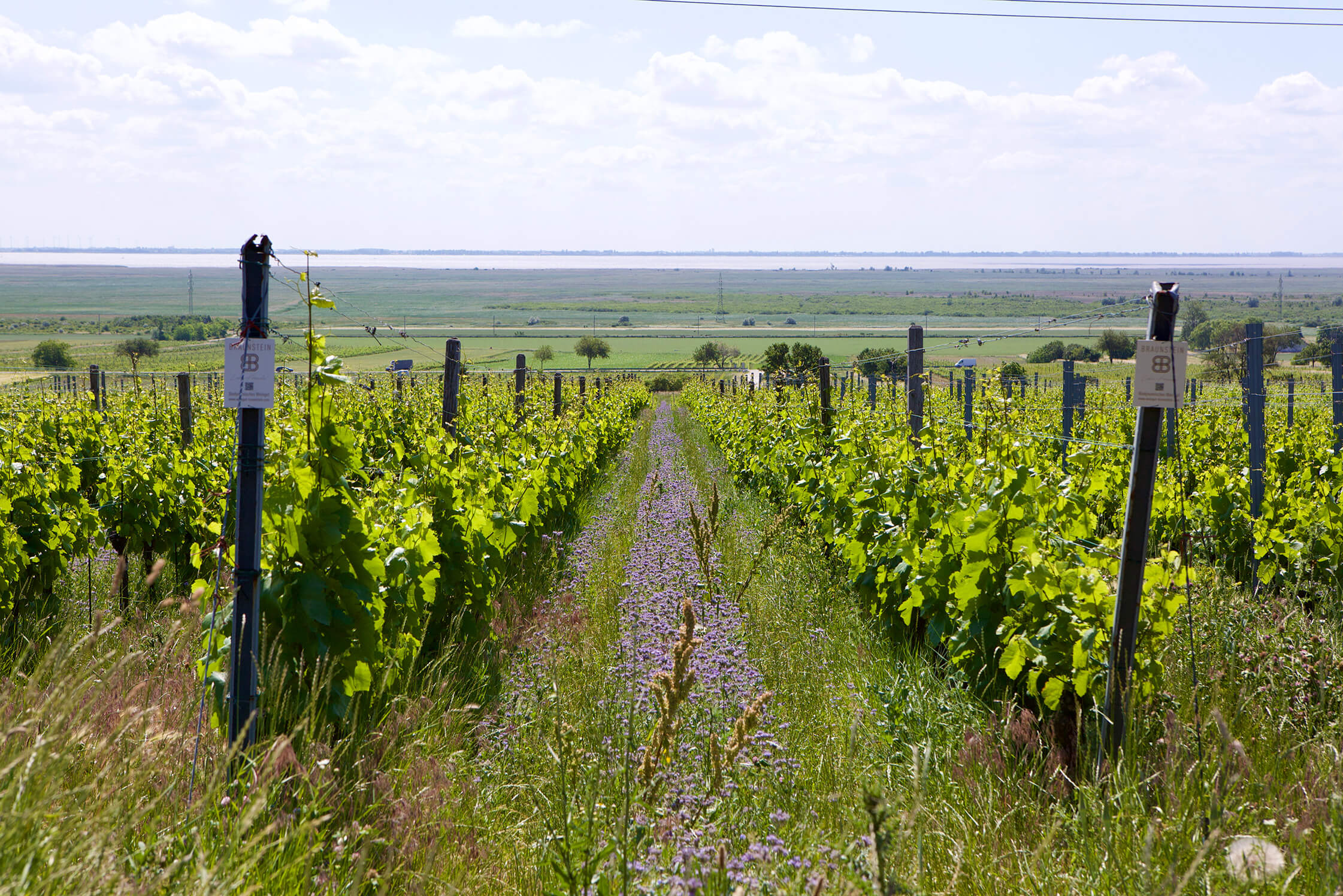
After the high-flying action, we went back to the winery and set up for a video interview with Birgit, so she could talk about her range of wines. Inside, there were a lot of mosquitos, bigger than I’ve ever seen, the size of mosquito hawks. They seem to thrive in her refreshingly cool tasting room constructed of rock. It’s no surprise to have these prehistoric-sized mosquitos in these parts because the Neusiedler See (Lake Neusiedl), a massive, shallow lake with a maximum depth around six or seven feet is close, and it’s a perfect breeding ground for this insect that seems to serve no purpose other than to disturb our sleep, make us itch (even if we just see them or hear them prior to their attempted jab), though I suppose that they really exist as a primary food source for a lot of birds and bats. One was just hanging around on Birgit’s head through much of the interview and I wanted to reach across the table to smack it off of her but it just stayed in her hair, where it seemed to get lost.
While Birgit is most known for her Blaufrankish red wines and atypical but very well-done experimental wines, the shock wine of my tasting with her was her entry-level Chardonnay, simply labeled Chardonnay Felsenstein. It’s grown entirely on limestone, and there’s no doubt about it given its aromas and taste. It’s impressive and was more fun to drink than almost any Mâconnais Chardonnay I’ve had in recent years that are even close to this in price. It’s not at all overplayed in any direction, but rather highlights Chardonnay’s best assets when grown on pure limestone: freshness, x-factor, tense white fruit, and mineral sensations for days. I don’t expect the world to look toward Austrian Chardonnay merely on account of this one, but for those on a budget looking for a real terroir experience at a reasonable price, this is one to not miss. Another Chardonnay of equal impression and value is from La Casaccia, a cantina in Asti whose vineyards grow on pure chalk.
Birgit’s zillion different cuvées of experimental wines are mostly sold in Austria. I like a lot of them because they are pleasurable with solid terroir trimmings. But I get the sense that the global market isn’t quite ready for Austrian glou glou. Maybe it’s too weird for people to imagine Austrians loosening up so much and breaking out of the hyper-sophisticated, buttoned-up culture with which they are associated—while some parts of Germany made the leap a long time ago, especially Berliners. But make no mistake, Austrians know how to party. It’s just hard to imagine in more quiet places like Burgenland.
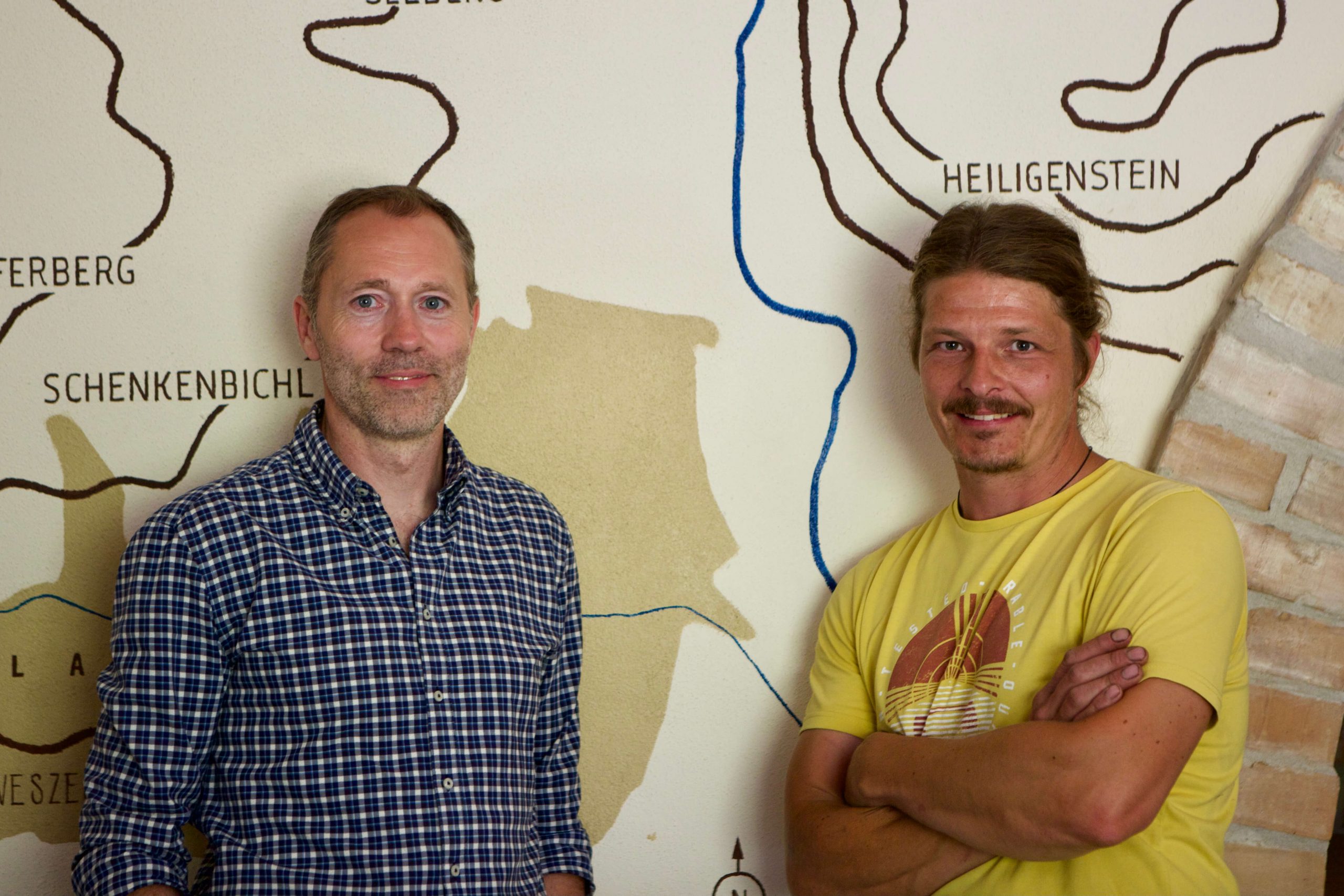
The following day, I dropped in on the boys over at Weingut Weszeli, Davis Weszeli (on the left) and his winemaker, viticulturist, and right-hand man, German ex-pat, Thomas Ganser (on the right). After some drone-time, we did a vertical tasting of the last four years (2015-2018) of bottled Grüner Veltliners and Rieslings from all their cru wines. What a treat that was, and how eye-opening!
From the sky with all the twists and turns and hills covered in green vines everywhere, it was almost impossible to navigate Kamptal’s vineyards by air. I shot from a position standing in the famous vineyard, Seeberg, and managed to grab some good shots of the more famous hillsides of Heilingenstein and Gaisberg to the southeast.
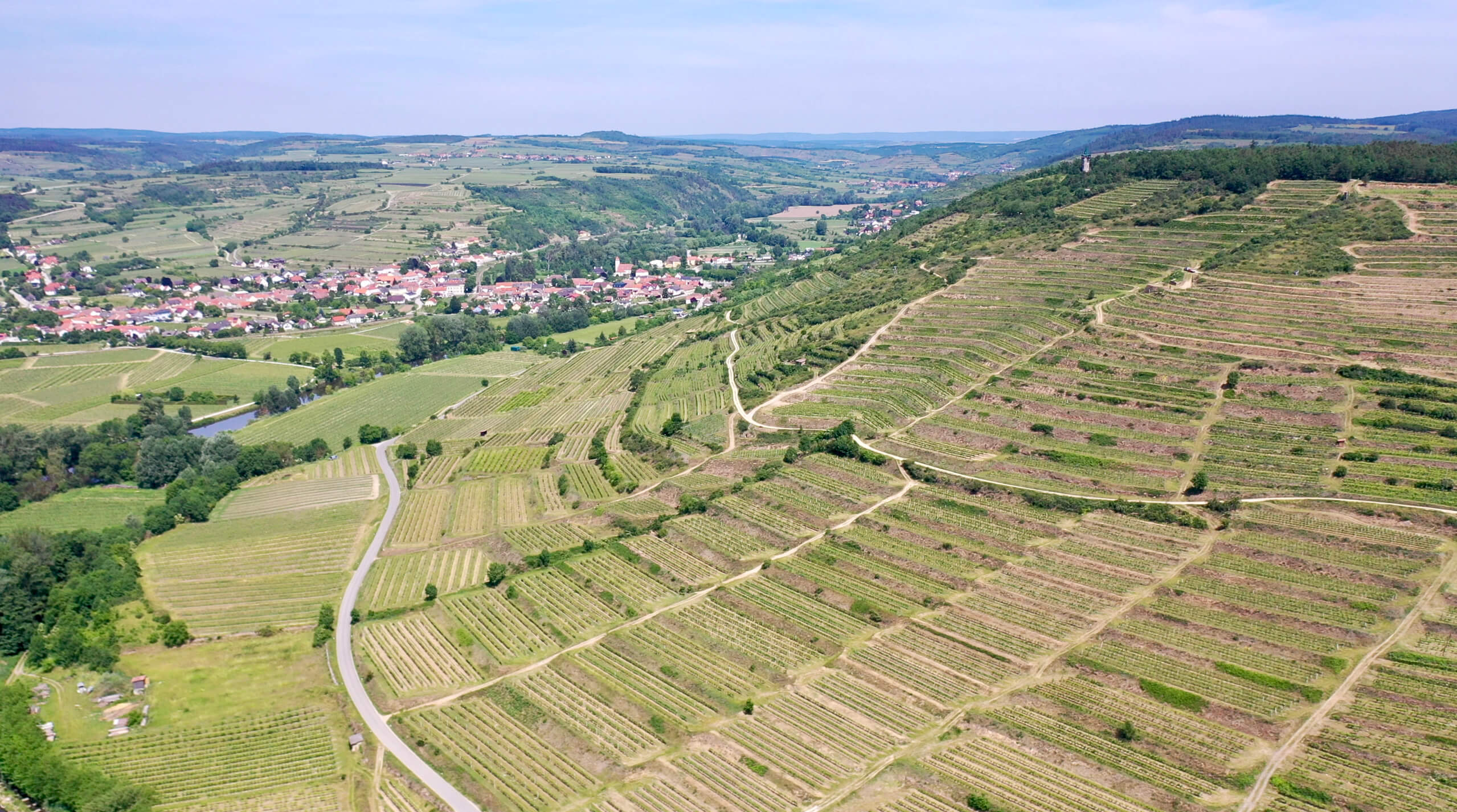
Here’s a big deal you probably didn’t know: Weszeli’s cru wines spend three years in large wood casks before bottling. Almost nobody does that and judging by how seriously complex their wines are, it’s strange that it’s so uncommon. Many years ago, when I worked in a limited capacity in California with Ernie Loosen’s wines from the Mosel, we introduced Rieslings that were aged one, two and three years in wood before bottling. Ernie learned about this practice when he discovered his grandfather’s old cellar notebook and it was a revelation. It wasn’t really new to me because Weszeli was already doing it, but, in my opinion, they did it far too quietly. They should’ve been shouting from the rooftops about this unusual but seemingly historical and nearly forgotten approach because it yields fabulously unique results.
The problem with Weszeli is that it’s taken a long time to realize the potential of their extended aging in barrel. Three years is a long time, and this is compounded by another two in bottle, which in most cases is four times longer than the aging that goes into most other famous Austrian grower’s top wines.
2017 is a breakthrough for Weszeli on many levels. It was the right vintage for their extended cellar aging approach and the wines end up built like Thomas: muscular and defined, like a mythological warrior statue. They’re impressive and complex, so deeply complex that they stop just short of overwhelming—like Puligny-Montrachet big hitters tend to do. If layers of complexity and depth are defining measures for great wine (which they are) the 2017s from Weszeli would be scored in the mid to high 90s on that alone. But more than just their tastes and smells, you can feel the life of their organically farmed vineyards vibrating through their wines. The three years in oak heavily curbs what would otherwise evoke the same ubiquitous (and sometimes boring) characteristics of Austrian Rieslings and Grüner Veltliners that go through a short aging before bottling, by cutting the primary fruit down to size and sculpting the wines around their secondary and tertiary distinctions. Weszeli’s wines are almost unrecognizable when compared to other young wines in the region, save their fully endowed natural acidity, a structural element that doesn’t depart unless tampered with.
Weszeli is on a path that few winegrowers in their region will be able to follow closely because of the time it takes, and the investment needed to go from the fast annual turnaround to waiting it out for four or five years before you sell your top wines, which also happen to be your most expensive to make. Other Austrian wineries might do well to take note of what Weszeli’s wines offer that those of other great producers don’t. I feel lucky to be involved with these guys and to finally, after six years of working together, be able to offer the results of the ideas hatched more than a decade ago. Kudos to them. Austria is lucky to have the diversity of their wines and people should take a closer look.■
Next month it’s Veyder-Malberg, and then off to Germany to meet up with two of the most exciting young producers making unexpected waves.

